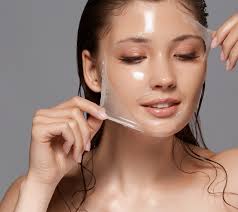Chemical peels are widely used by dermatologists to improve the appearance and texture of the skin, offering various benefits depending on the type and strength of the peel used.
Here’s a comprehensive look at how chemical peels work, their effectiveness, and potential risks:
How Chemical Peels Work:
Chemical peels involve the application of a chemical solution to the skin, which causes exfoliation and eventually peeling of the top layers of the skin. This process promotes cell turnover and stimulates the production of new skin cells, leading to smoother, more even-toned skin.
Effectiveness of Chemical Peels:
- Improvement in Skin Texture: Chemical peels can effectively smooth out rough skin texture by removing dead skin cells and promoting the growth of new, healthier skin.
- Reduction of Fine Lines and Wrinkles: Some chemical peels, especially medium to deep peels, can help reduce the appearance of fine lines and wrinkles by stimulating collagen production.
- Treatment of Acne and Acne Scars: Chemical peels can be beneficial for acne-prone skin by unclogging pores, reducing inflammation, and fading acne scars.
- Evening Skin Tone: Peels can improve pigmentation irregularities such as sun spots, age spots, and melasma, leading to a more even skin tone.
Types of Chemical Peels:
- Superficial Peels: These peels use mild acids like alpha hydroxy acids (AHAs) or beta hydroxy acids (BHAs) to exfoliate the outer layer of the skin. They are suitable for improving mild skin discoloration and rough texture.
- Medium Peels: These peels penetrate deeper into the skin using stronger acids like glycolic acid or trichloroacetic acid (TCA). They can treat more pronounced wrinkles, acne scars, and pigmentation issues.
- Deep Peels: This type of peel, often using phenol, penetrates deeply into the skin to address severe wrinkles, deep scars, and extensive sun damage. Deep peels provide significant results but require longer recovery times and carry higher risks.
Risks and Considerations:
While chemical peels are generally safe when performed by a trained dermatologist, there are some risks and considerations to be aware of:
- Skin Irritation: Temporary redness, irritation, and stinging are common after chemical peels, especially with stronger formulations.
- Pigmentation Changes: In some cases, chemical peels can cause temporary or permanent changes in skin pigmentation, particularly in individuals with darker skin tones.
- Infection: There is a small risk of infection, particularly with deeper peels where the skin barrier is compromised.
- Scarring: Improper application or post-peel care can lead to scarring, although this risk is minimized when performed by experienced professionals.
- Sun Sensitivity: Following a chemical peel, the skin is more sensitive to sunlight. It’s essential to use sunscreen and avoid direct sun exposure to prevent complications.
Conclusion:
Chemical peels are effective treatments for improving skin texture, reducing signs of aging, and addressing various skin concerns. The key to achieving safe and satisfactory results lies in consulting with a qualified dermatologist who can assess your skin type, concerns, and recommend the most appropriate peel type and strength for your needs. By following pre- and post-peel instructions diligently, you can minimize risks and enjoy the benefits of smoother, rejuvenated skin.





Comments